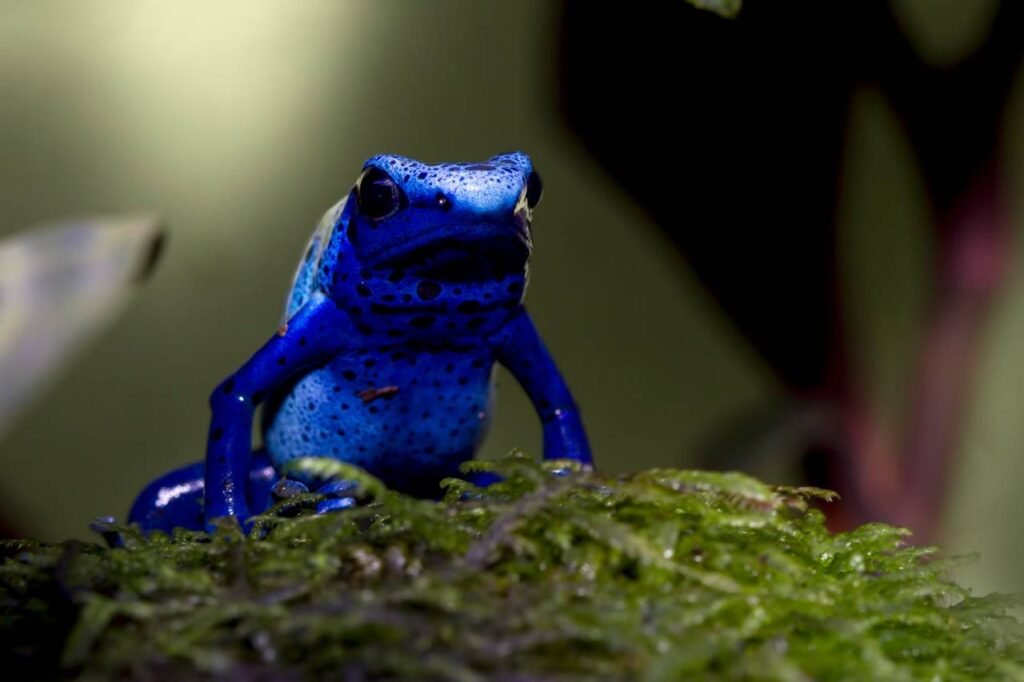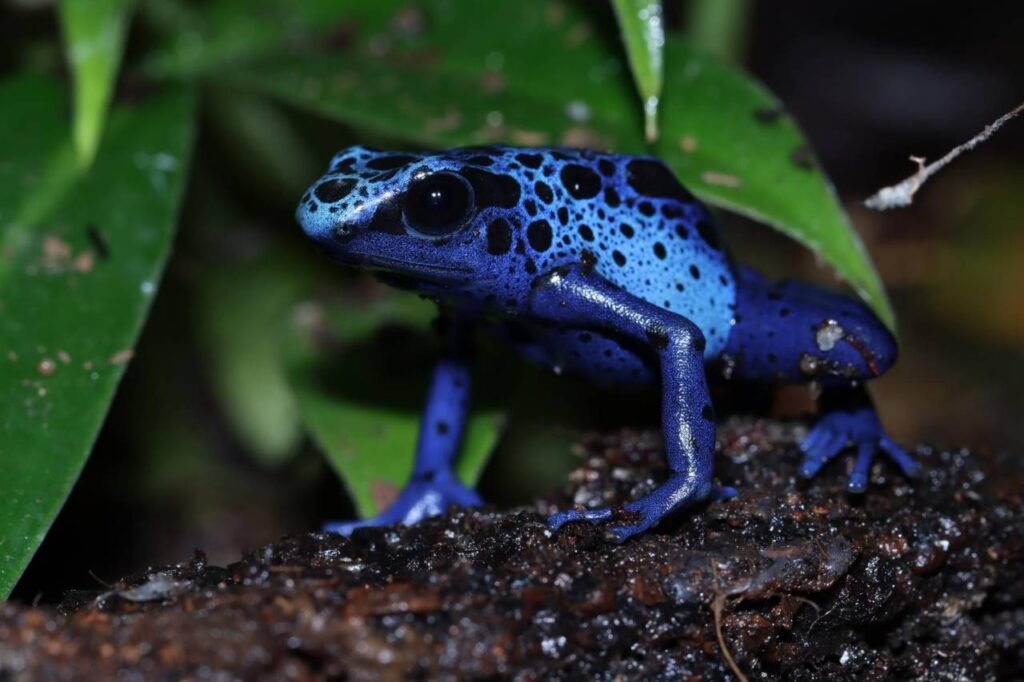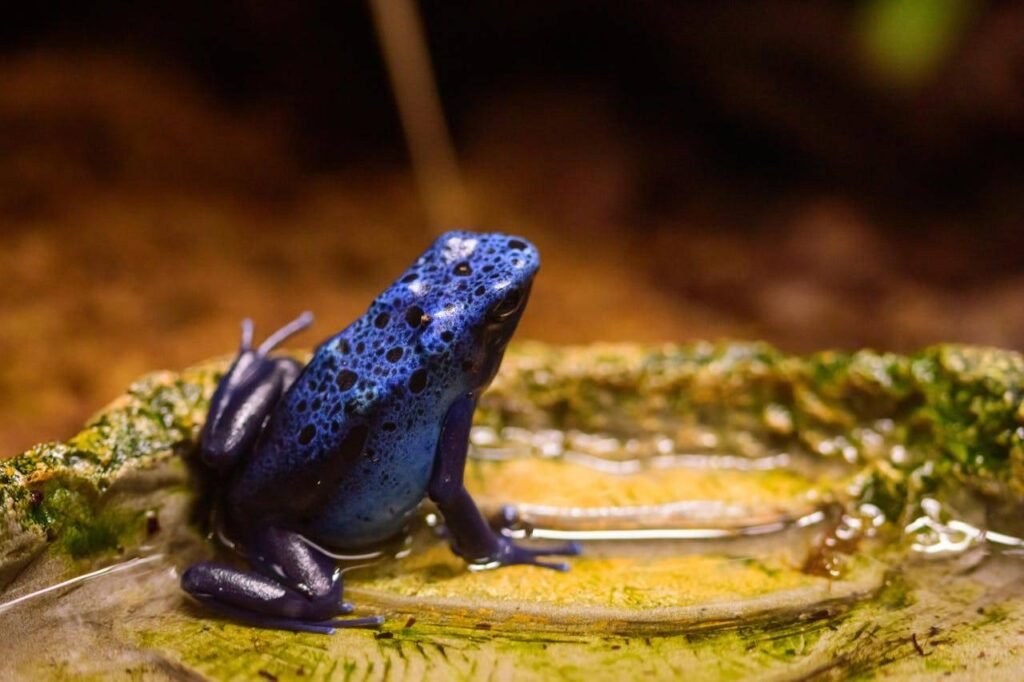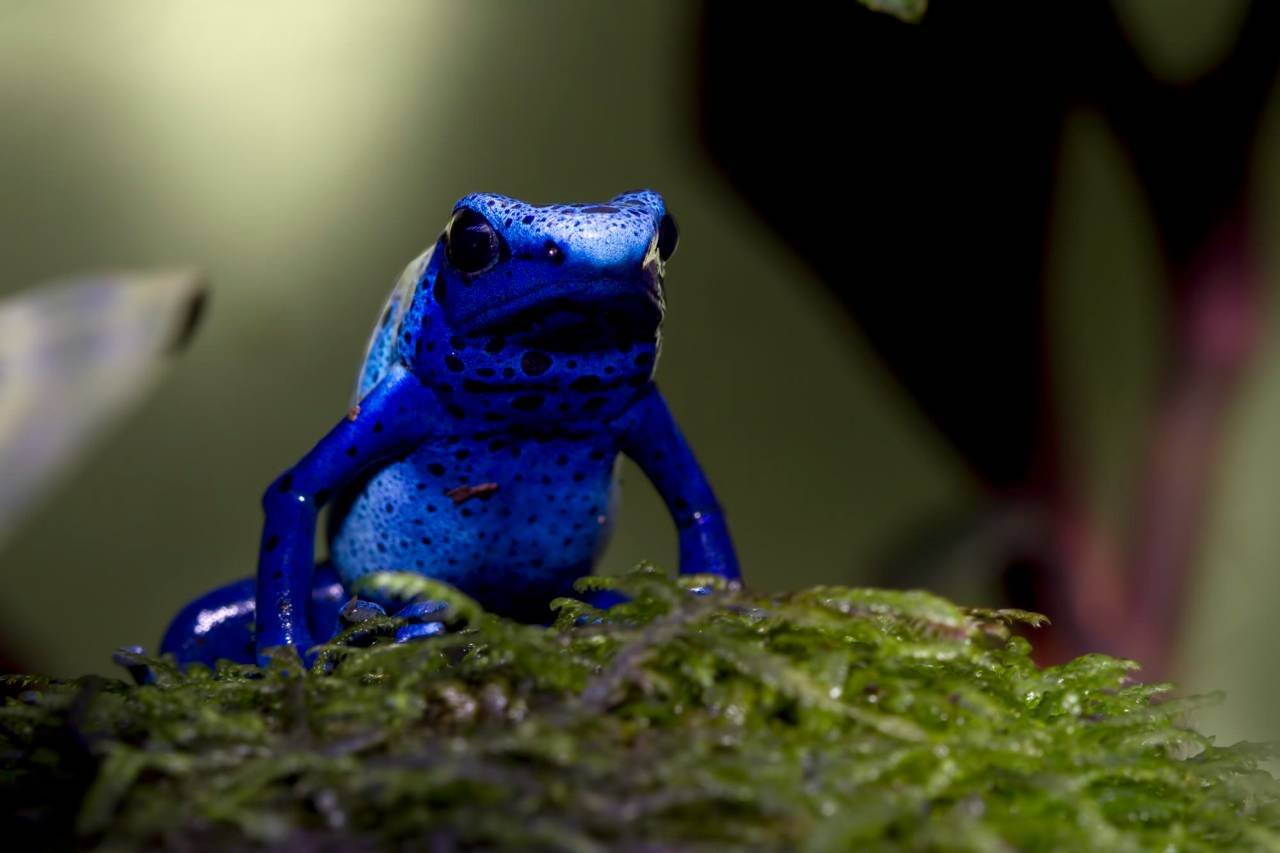The Blue Poison Dart Frog, known scientifically as Dendrobates tinctorius “azureus,” is a remarkable amphibian that captivates with its striking appearance and intriguing characteristics. Native to the rainforests of South America, this vibrant frog is both beautiful and toxic, making it a fascinating subject for scientists and nature enthusiasts alike. Let’s explore the world of the Blue Poison Dart Frog and what makes it such a unique member of the amphibian family.
Characteristics and Appearance
The Blue Poison Dart Frog is instantly recognizable by its brilliant blue skin adorned with irregular black spots. Its vivid coloration serves as a warning to potential predators, signaling its toxic nature. Adult Blue Poison Dart Frogs typically measure around 1.2 to 2 inches in length, making them small but visually stunning creatures.



Habitat and Distribution
These frogs inhabit the tropical rainforests of Suriname and parts of Brazil, thriving in humid environments near streams and ponds. The dense foliage provides ideal cover, while the moist climate supports their skin health and hydration. Unlike many other amphibians, these frogs are diurnal and are often seen navigating the rainforest floor in daylight.
Toxicity and Diet
The Blue Poison Dart Frog’s vibrant color is directly related to its toxicity. These frogs produce potent alkaloid toxins in their skin as a defense against predators. Interestingly, these toxins are primarily derived from their diet in the wild, which includes ants, termites, and other small insects rich in certain alkaloids.
While the Blue Poison Dart Frog is highly toxic and uses its vivid coloring as a warning to potential predators, it is not the most poisonous of its kind. The Golden Poison Frog (Phyllobates terribilis) holds the distinction of being the most toxic species within the poison dart frog family, and one of the most poisonous animals on earth. Although the Blue Poison Dart Frog possesses significant toxins, it ranks lower on the list of the world’s most poisonous animals.
Reproduction and Breeding
Blue Poison Dart Frogs have a fascinating reproductive process that aligns with their unique natural traits. During the mating season, which usually occurs during the rainy months, males establish territories and call to attract females with a series of trills or soft croaks. Once a female is attracted, the male lead her to a suitable site, often a moist area such as a leaf or a small pool, where she will lay her eggs.
These frogs are known to be diligent parents. After the female lays a clutch of about 5 to 10 eggs, the male often takes over the responsibility of keeping them moist until they hatch. Once hatched, parents often carry the tadpoles on their backs to deposit them in small pools of water, such as those found in bromeliads, where they continue to develop.
Blue Poison Dart Frogs typically breed once a year, aligning with the rainy season that supports their reproductive cycle by providing abundant water and humidity.
Conservation Status
While not currently listed as endangered, the Blue Poison Dart Frog faces threats from habitat destruction and climate change, which could impact its population in the wild. Conservation efforts focus on habitat preservation and raising awareness about the ecological importance of these frogs.
Related Topics and Entertaining Reads
To learn more about other fascinating poison dart frog species, be sure to explore our comprehensive article on poisonous dart frogs, which delves into their diversity and ecological roles. For those interested in lighter, entertaining content, check out our collection of frog jokes and enchanting frog-themed fairy tales for a good laugh and imaginative escape.
FAQs About Blue Poison Dart Frogs
Are Blue Poison Dart Frogs dangerous to humans?
While they are highly toxic, Blue Poison Dart Frogs are not usually dangerous to humans unless mishandled. Their toxins can be harmful if ingested or if they come into contact with open wounds.
Where do Blue Poison Dart Frogs get their toxins?
These frogs obtain their toxins from their diet of alkaloid-rich insects in the wild. Frogs raised in captivity without these insects typically lose their toxicity.
What conservation efforts are in place for Blue Poison Dart Frogs?
Conservation efforts include habitat preservation, education, and captive breeding programs to ensure the stability and health of their populations.
How long do Blue Poison Dart Frogs live?
In captivity, they can live up to 10 years with proper care, though lifespans in the wild may vary based on environmental conditions.
What do Blue Poison Dart Frogs eat in captivity?
In captivity, these frogs are usually fed a diet of small invertebrates like fruit flies and pinhead crickets, lacking the specific alkaloids that contribute to their toxicity in the wild.
What are Blue Poison Dart Frogs’ breeding habits?
These frogs breed once a year, usually during the rainy season. Males call to attract females, and the parental frogs carefully tend their eggs and transport tadpoles to water-filled locations.
How is the Blue Poison Dart Frog ranked in terms of toxicity among animals?
While toxic, the Blue Poison Dart Frog is not the most toxic within the poison dart frog family. It ranks lower in toxicity compared to the Golden Poison Frog, which is among the most poisonous animals globally.

